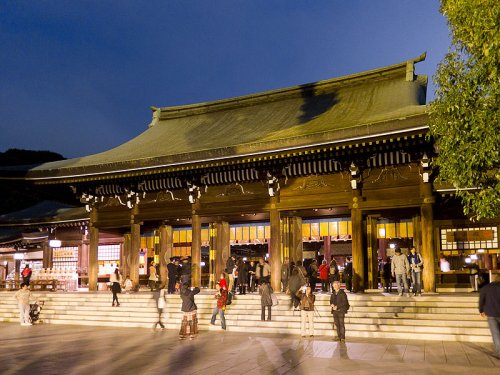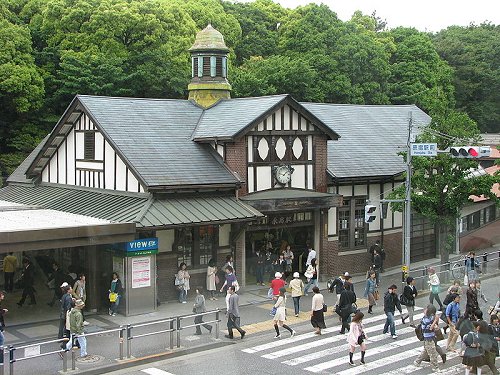Harajuku is a district in Shibuya ward in Tokyo. As a tourist, you will remember it as the place to go, to see young Japanese people and their rather outlandish dress sense. This is especially true on Sunday afternoons. The Harajuku street style has been talked about and written in both Japanese as well as intertnational publications, so much so that it has made Harajuku a fashion capital of sorts.
The Harajuku area can be described as the site around JR Harajuku Station, between Shinjuku and Shibuya. The station, which is served by the Yamanote Line, is a timber-frame structure that looks like an English country home. It is a popular shopping area. The main shopping streets are Takeshita-don and Omote-sando.
Takeshita-don has tiny stores selling the gear and make-up for those young people to dress up. Among the styles you can find includes Gothic Lolita, visual kei, rockabilly, hip-hop, punk, and hybrids of all the aforementioned styles.
Omote-sando, on the other hand, is significantly more upscale, tree-lined, and has been branded Tokyo's Champs-Élysées. The usual suspects in luxurious brands are represented here, among them Prada, Louis Vuitton and Chanel.
 Meiji-jingu Shrine, Harajuku
Meiji-jingu Shrine, HarajukuSource: http://commons.wikimedia.org/wiki/File:Meiji-Jingu-Shrine-2010-11-01-02.jpg
Author: Rs1421

Author: Rs1421

How to go to Harajuku
By SubwayTake the Tokyo subway to the Meiji-jingumae Subway Station, served by the Chiyoda Line (C-03) and the Fukutoshin Line (F-15). Take the Meiji-dori Exit and that will deposit you right in front of the Meiji-jingu Shrine, next to the JR Harajuku Station.
By Train
The Yamanote Line takes you from Tokyo Station to the JR Harajuku Station, next to the Meiji-jingu Shrine and at the beginning of Omote-sando street.
 Harajuku Station, Tokyo
Harajuku Station, TokyoSource: http://commons.wikimedia.org/wiki/File:Harajuku_Station_Tokyo.jpg
Author: Chris 73

Author: Chris 73

What to see in Harajuku
- Omotesando Hills
Major shopping mall along Omote-sando. - Meiji-jingu Shrine
Shrine dedicated to the deified spirits of Emperor Meiji and his consort. - Togo-jinja Shrine
Shrine dedicated to Admiral Togo Heihachiro. - Yoyogi Park
A large park and popular hangout for young people on Sundays.
 Latest updates on Penang Travel Tips
Latest updates on Penang Travel Tips
 Map of Roads in Penang
Map of Roads in Penang
Looking for information on Penang? Use this Map of Roads in Penang to zoom in on information about Penang, brought to you road by road.
Copyright © 2003-2025 Timothy Tye. All Rights Reserved.

 Go Back
Go Back